How do you heal an ecosystem?
Most of the land at The Wilds is a test case for how well, and how soon, land can heal after strip mining

Editor's note: This is an excerpt from the multimedia documentary 10,000 ACRES, about the history of the land currently occupied by The Wilds. The Wilds is one of the largest endangered species preserves in North America, but that operation requires only about 20 percent of the land. The other 8,000 acres is a study in ecology rehabilitation from strip mining, as this story explores.
The full history of this land will be published by 100 Days in Appalachia October 27. There will be two premiere events: one at Muskingum University, Thursday, October 27, 7 p.m. at the Boyd Science Center; and one at Denison University, Tuesday, November 1, 7 p.m., Slayter Auditorium. Both are open to the public. You can find more information here.
An island of trees sits on a hilltop, surrounded by grasslands.
Genelle Uhrig gestures out the window of the Jeep. “Those woods over there are remnant forests. We monitor salamander populations there.”
She says that the remnant forest is so small, and so far away from any other forest, that the salamander population is declining.
As director of ecology at The Wilds, this is the kind of thing Genelle is paid to think about. And she has a lot to think about. Only about 20 percent of The Wilds’ property is dedicated to what makes it famous, the endangered species part of the program The rest is dedicated to the ecology side, and that can mean lots of different things, depending on whether the land was strip mined (probably), whether it was reclaimed with trees or grass, and whether it is being threatened by invasive species (for sure).
So what is she trying to accomplish on the 8,000 acres in her charge? Genelle is clear: “We’re trying to create as much habitat for the widest diversity of species that we can.”
This means creating a vernal pool in one of the reclaimed forests; putting up bat boxes to draw in the endangered Indiana bat; and creating a thriving wetland where there wasn’t one before, to encourage the wealth of biodiversity a wetland supports.
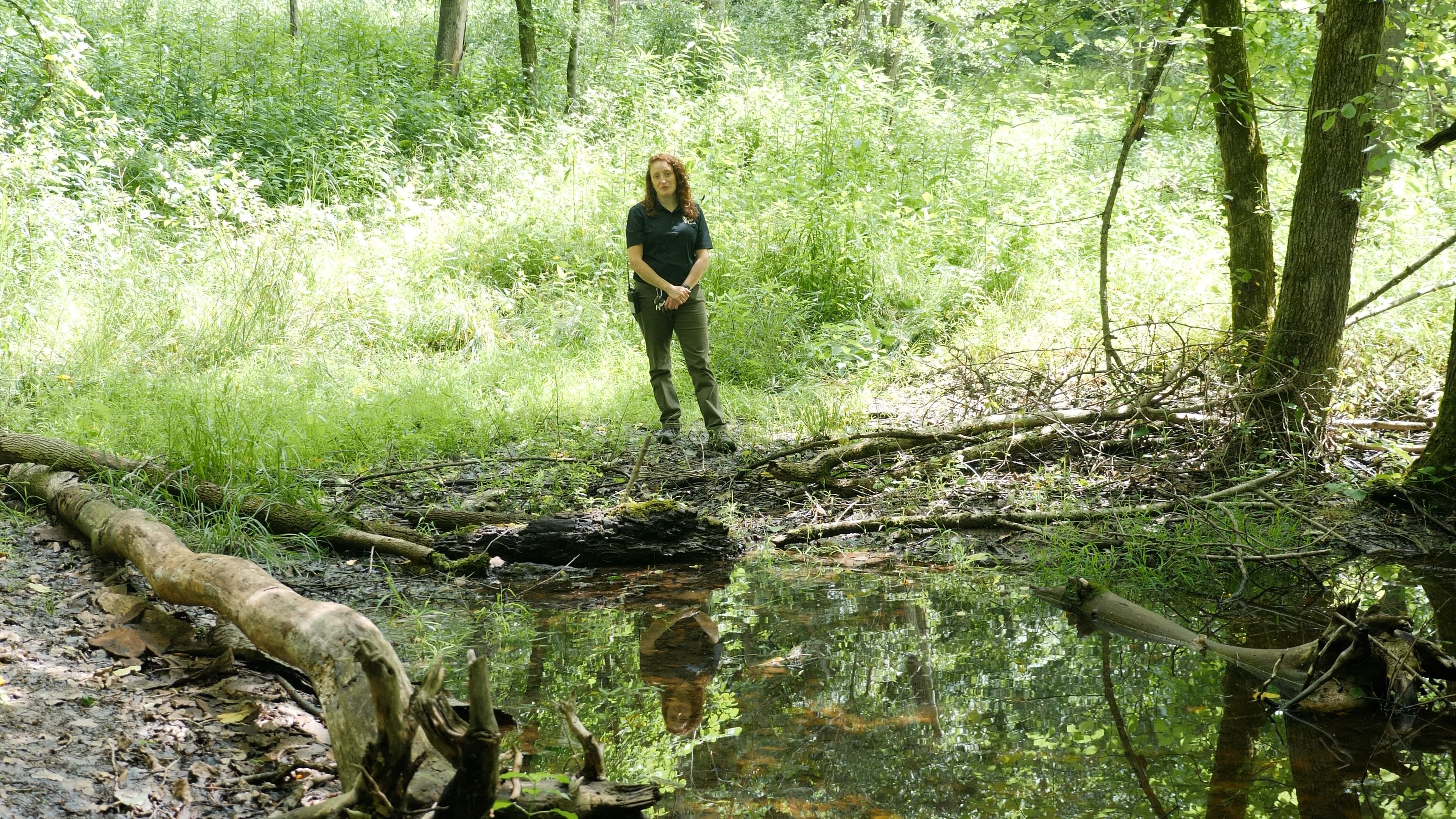
Genelle at the vernal pool, a seasonal wetland. (Photo by Doug Swift)
Genelle at the vernal pool, a seasonal wetland. (Photo by Doug Swift)
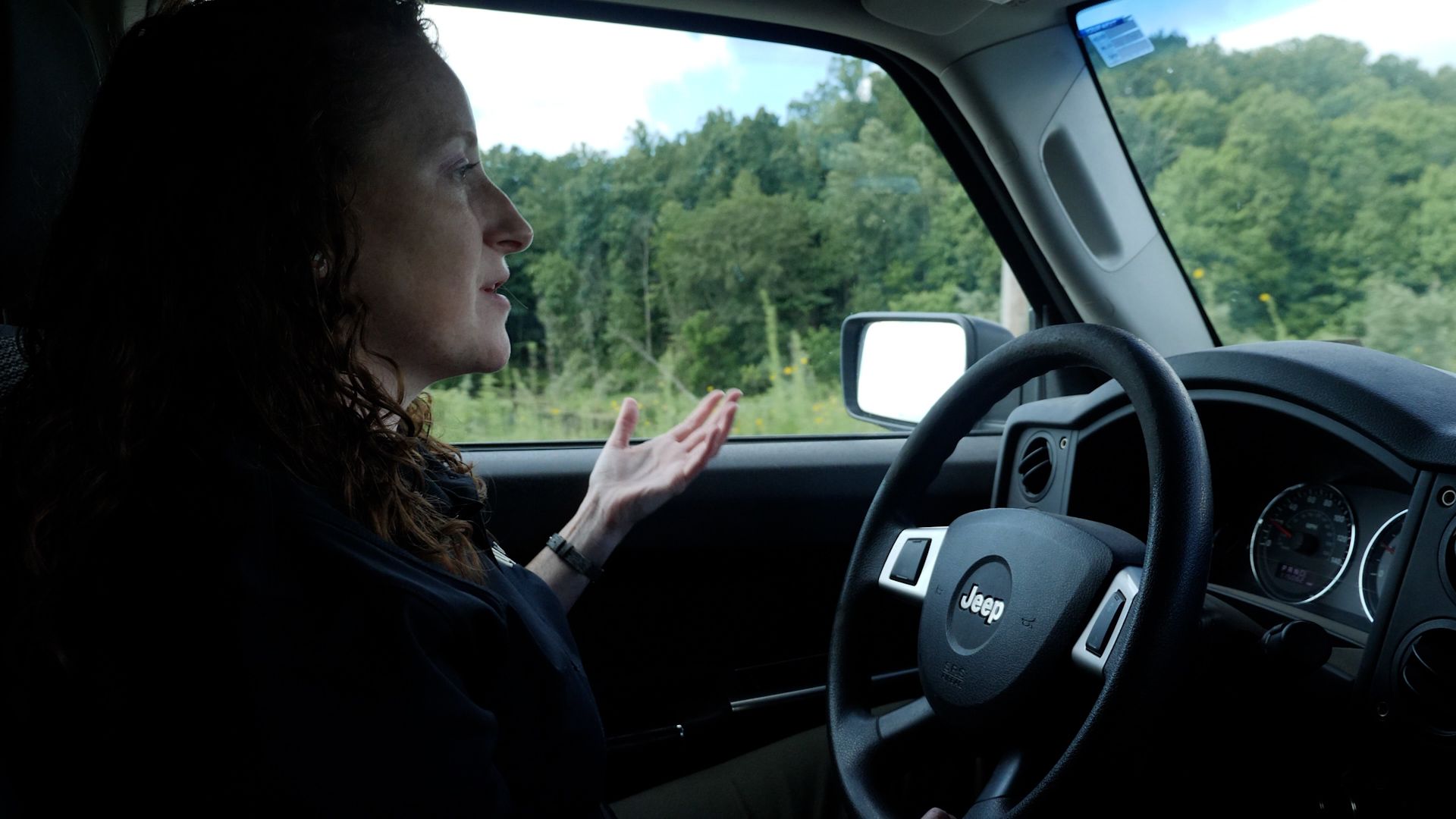
Genelle Uhrig drives by a stand of remnant forest. (Photo by Doug Swift)
Genelle Uhrig drives by a stand of remnant forest. (Photo by Doug Swift)
This wetland was made possible in part by a state remediation program. In this case, a company destroyed some wetlands elsewhere to build a pipeline, and earned credits by building new wetlands at The Wilds. In the following short documentary, Anna Jones explores what it took to create a wetland, and what it’s like now that it’s here.
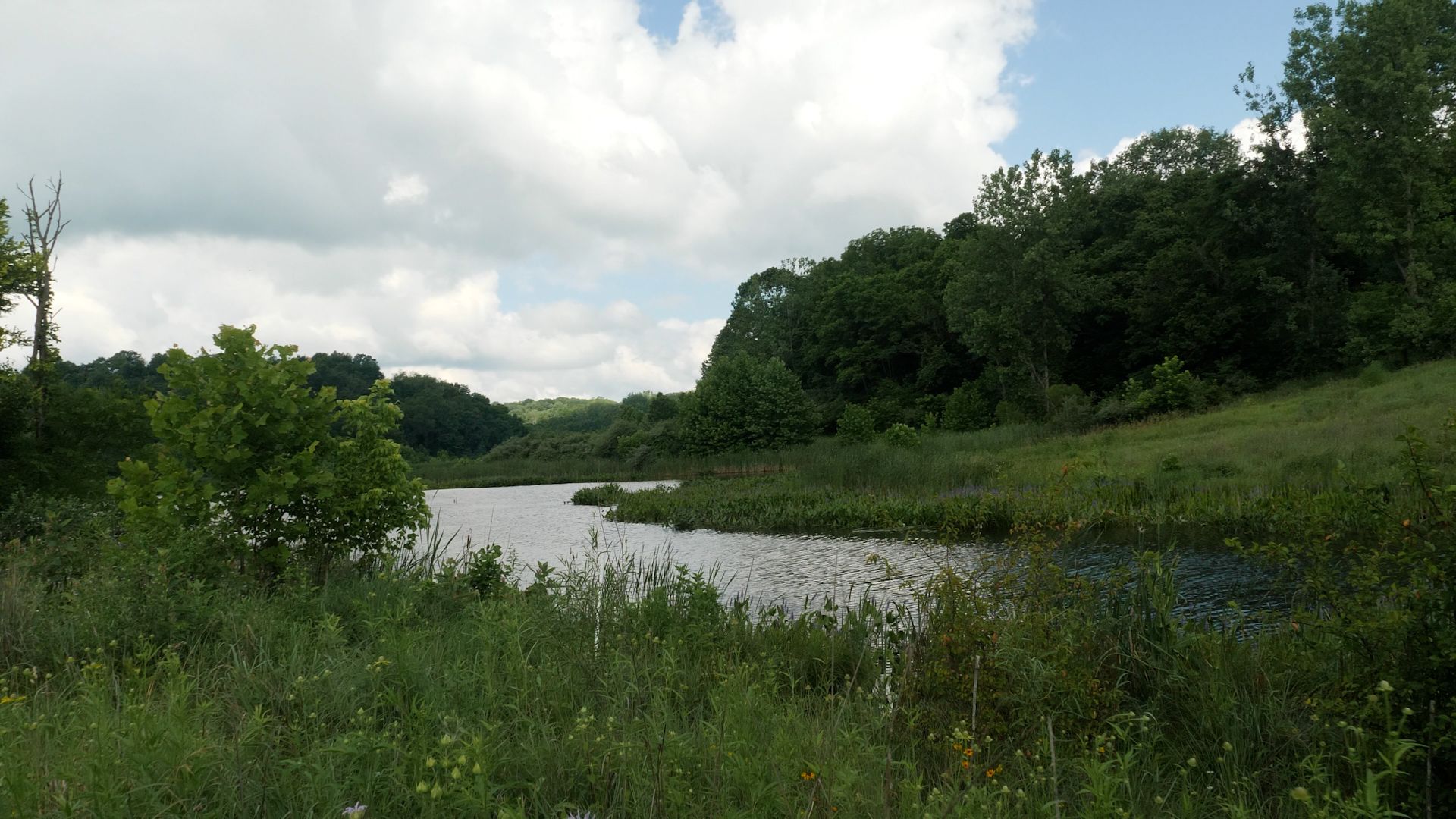
The Wilds is located in an area of Ohio with very little light pollution. Anna Jones created the following time lapse in the wetlands in March, 2022.
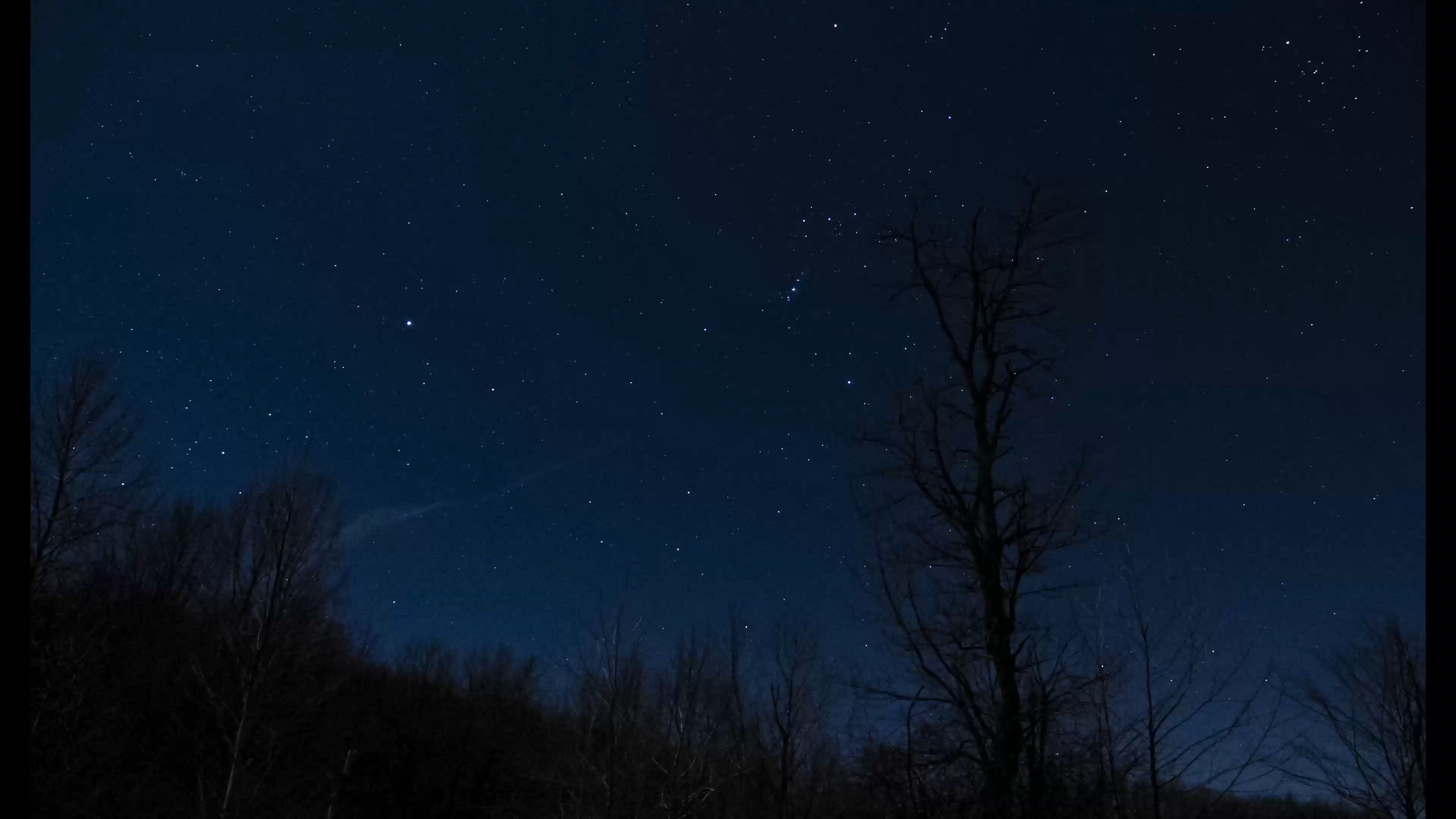
Robert Dickson grew up around these parts. When Central Ohio Power Company completed land reclamation and left hundreds of lakes in their wake, Robert grabbed his fishing pole and tackle box, ambled over the hills, and fished as many as he could. But then fences started to pop up, blocking him from his favorite spots. Fifteen miles of fences, to be exact, for The Wilds. Robert was not an early fan of this new “zoo.”
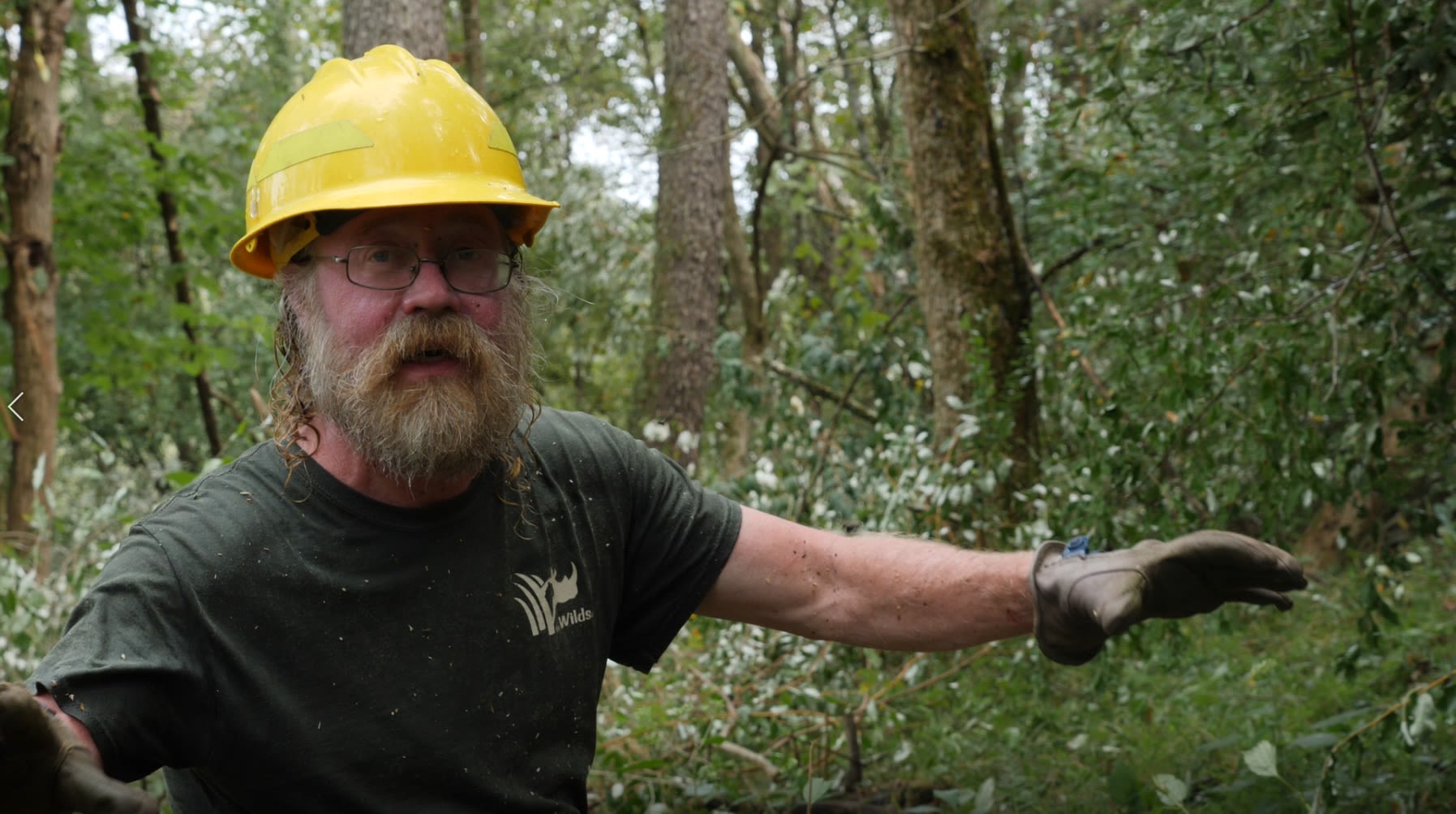
Robert Dickson, ecology technician, The Wilds. (Photo by Doug Swift)
Robert Dickson, ecology technician, The Wilds. (Photo by Doug Swift)
Decades later, Robert is the ecology technician at The Wilds, where he’s worked for the past nine years. It’s taken a while to come full circle, but once again he can fish all the lakes he wants. Among his official duties, Robert oversees the hellbender breeding program. Hellbender salamanders are on the endangered species list, due to loss of habitat. In West Virginia, hellbenders also face silt runoff from coal mining that clogs their streams.
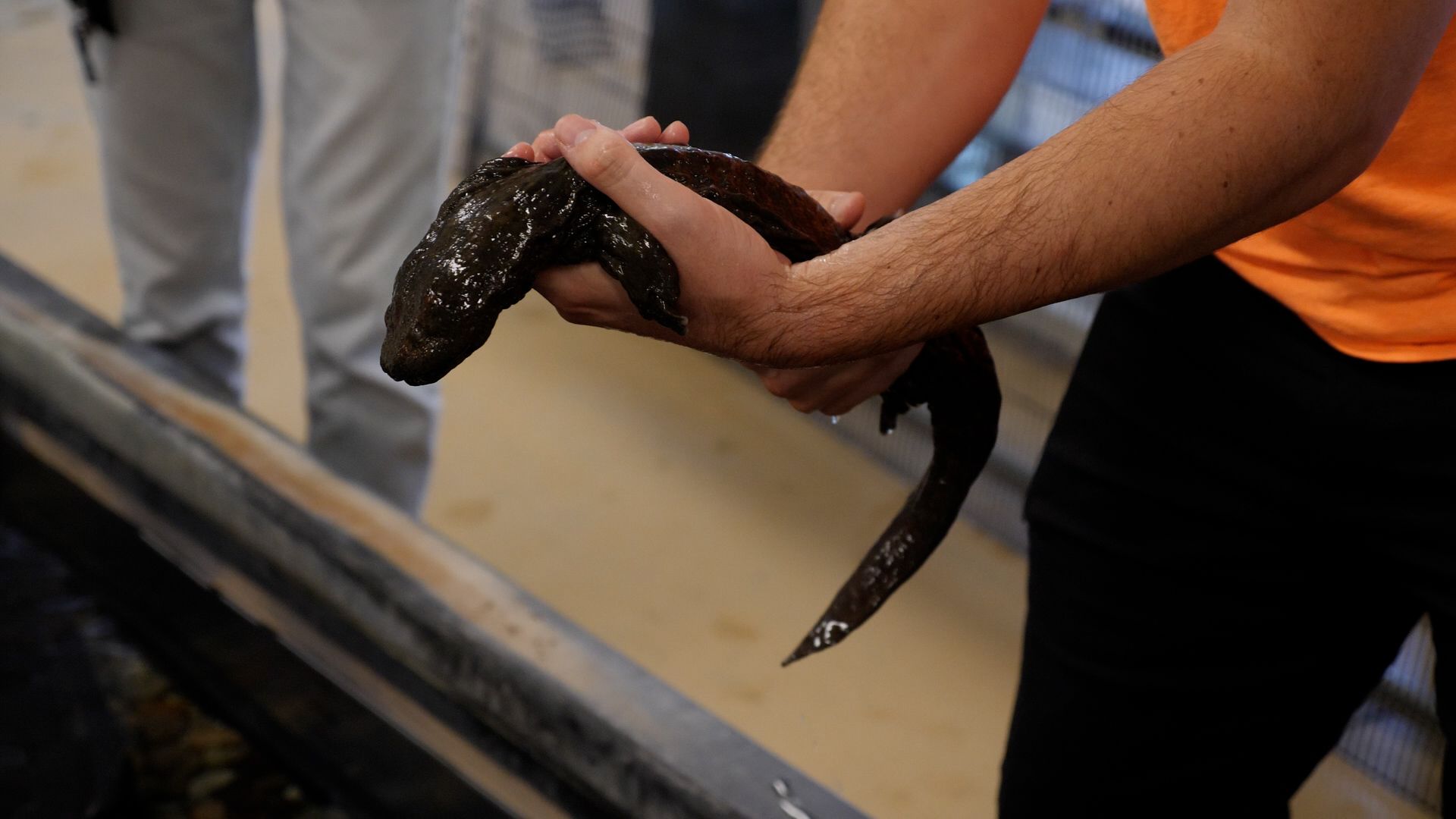
A hellbender is lifted from its tank at The Wilds. (Photo by Doug Swift)
A hellbender is lifted from its tank at The Wilds. (Photo by Doug Swift)
According to some people, hellbenders aren't pretty. The Nature Conservancy mentions a few unflattering nicknames: “snot otters,” “devil dogs” and “mud cats.” But their shy demeanor and ecological plight make them a favorite of visitors to the hellbender house, especially children.
The Wilds works in collaboration with the West Virginia Department of Natural Resources to reintroduce these amphibians into native habitats. They are bred from eggs, raised in a series of aquariums, and kept at icy, mountain-water temperatures. As they grow, they are rotated from aquarium to aquarium. At the right age, they are reintroduced to their native habitats. At least, that’s the plan. But last fall, when it came time for this reintroduction, the hellbenders couldn’t be released. One reason was that there wasn’t enough genetic diversity in the target river. Interbreeding would be bad for the long-range health of the species.
Robert’s other responsibility is the one that gives him real job security. It’s removing autumn olive with his Stihl chainsaw. These days, he’s working in the forest some call “Gary’s trees,” which was planted over 40 years ago by reclamation supervisor Gary Kastor and his team. This autumn olive was part of that initial tree planting. The trunks are fat and gnarly, but Robert saws right through them, then stacks the branches up in a pile. “Some people call those burn piles,” he says, as he gets his chain saw ready for another pass. “We call that habitat.”
Robert has the satisfaction of cutting down autumn olive. Everyone else just has to think about it. In my ride around the property with Genelle, there are no two words she says more than “autumn” and “olive.” In fact, of all the people I talk to who work at The Wilds, or who do their research at The Wilds, everyone mentions those words. Doug Spieles, professor of environmental science at Denison University, says, “Once you see autumn olive, you can’t unsee it.” I spoke with a neighboring farmer who slowly raised his arm, leveled his pointer finger at the bush with the silvery glistening leaves, and said, “I hate that stuff.”
Humans have a long history of importing plant species that we hope will solve a simple problem. And then, we suffer the unintended consequences. Kudzu and multiflora rose are two other examples. Watch this short doc about how autumn olive first seemed to be a good choice on these 10,000 acres, and now presents many problems.
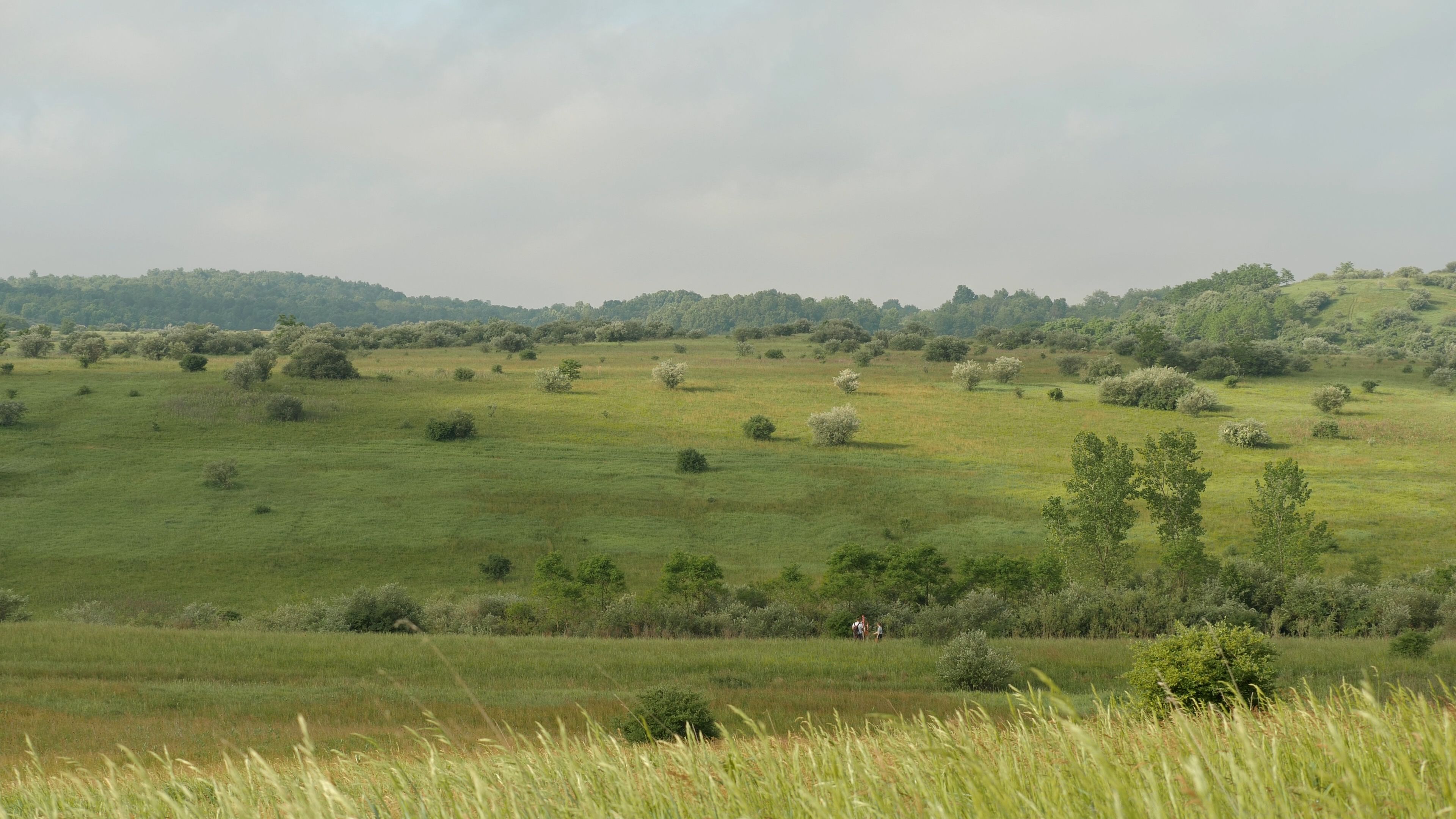
From an ecological point of view, Doug Spieles suggests that if we just left everything alone, nature would restore itself and find a new balance. But this could take hundreds of years.
“It’s an ecosystem, not a museum,” he says.
Genelle says no one in her field could be that hands-off. “There’s an issue of responsibility. If you destroy an ecosystem, you have to fix the ecosystem.”
This story is complicated by the fact that the autumn olive was put here by people who were trying to fix the ecosystem. Autumn olive is a good nitrogen fixer, it has berries for the birds, and it’s a fast grower, which was an anti-erosion measure when it was planted. It’s done the job we asked it to do. And now we live with the unintended consequences.
But not all unintended consequences are like autumn olive. The grasslands of The Wilds, first required by the Ohio Strip Mine Law of 1972, were resisted by those who wanted to continue planting trees. Now these grasslands create habitat for the Henslow’s sparrow, a small brown bird with a humble song that sounds like a hiccup.
The Henslow’s sparrow is one of many grassland birds that are increasingly endangered in the United States due to habitat loss, mostly because of big agriculture. And these species found that the grasslands of reclaimed strip mines make great preserves. The wonder is that these are birds that never lived in this region before, and were not brought here by humans.
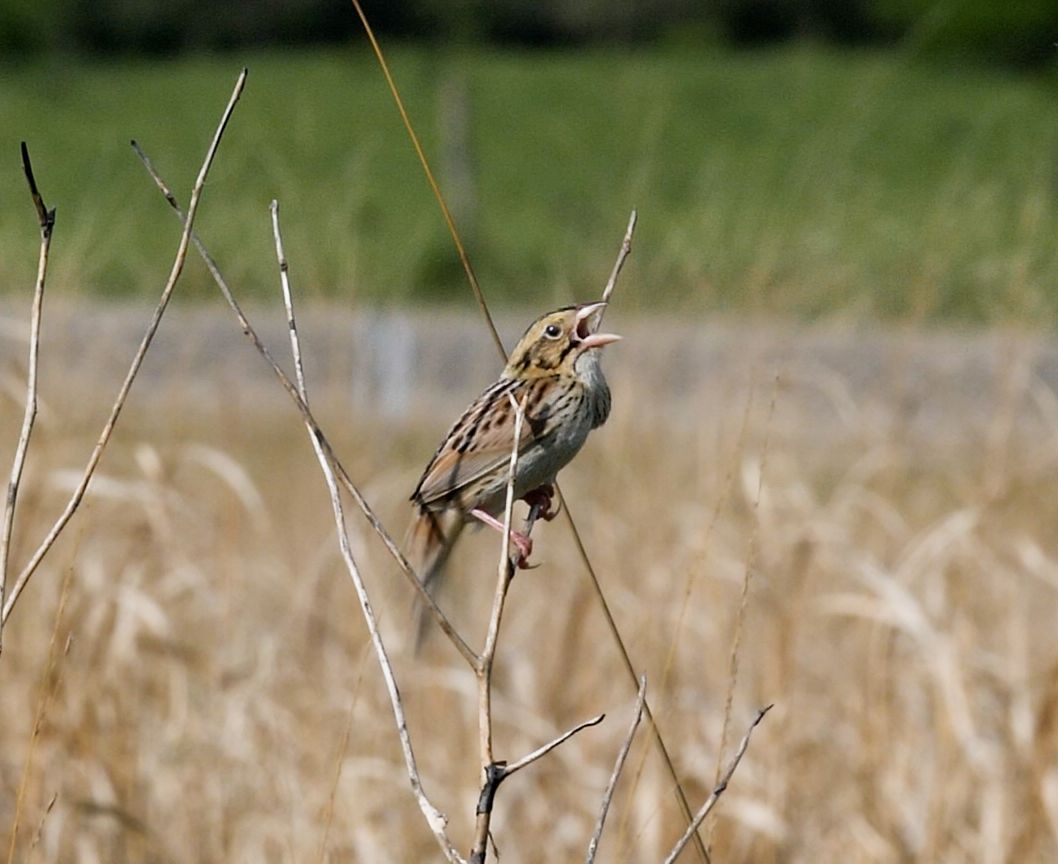
The Henslow's sparrow is endangered in some states. It has found a sanctuary in the grasslands at The Wilds. A visitor once traveled from Georgia to see this bird at The Wilds. (Photo by Doug Swift)
The Henslow's sparrow is endangered in some states. It has found a sanctuary in the grasslands at The Wilds. A visitor once traveled from Georgia to see this bird at The Wilds. (Photo by Doug Swift)
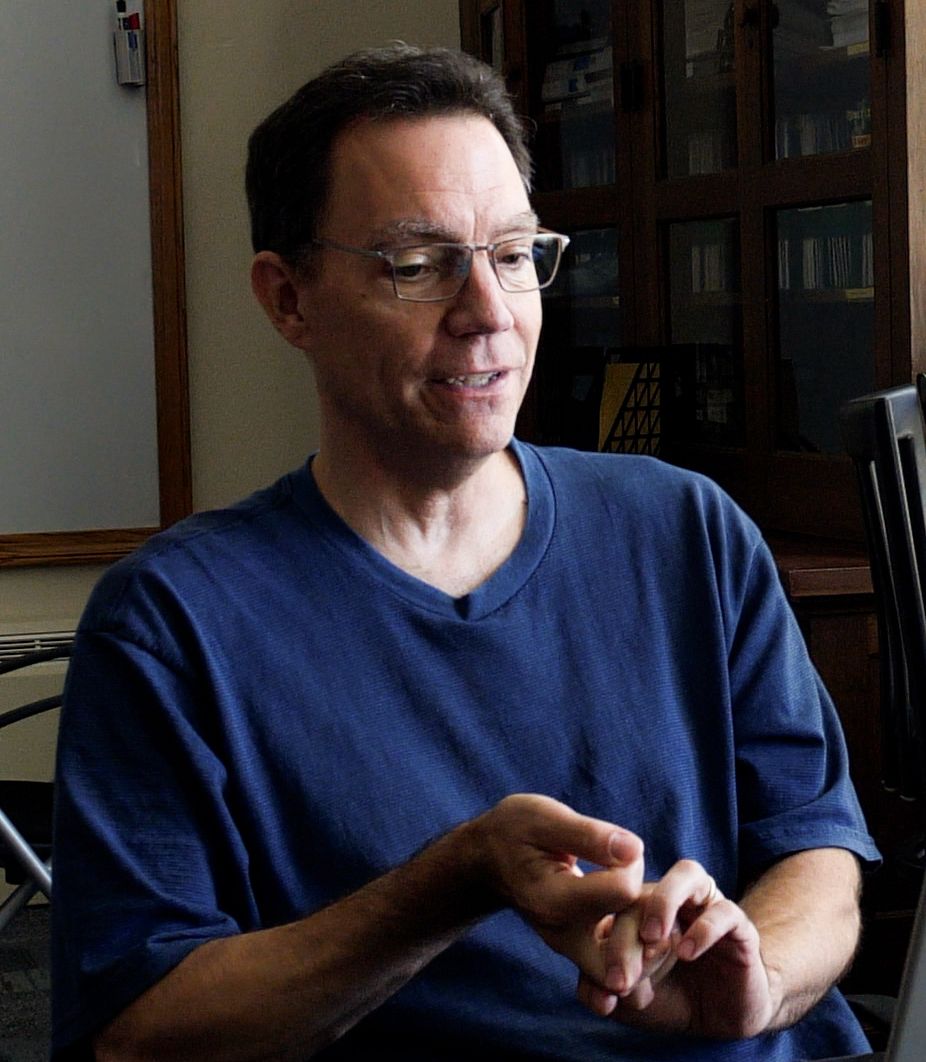
Doug Spieles, professor in environmenal science, studies the overall health of land that has been reclaimed from strip mining. (Photo by Doug Swift)
Doug Spieles, professor in environmenal science, studies the overall health of land that has been reclaimed from strip mining. (Photo by Doug Swift)
Danny Ingold has spent decades tracking the movements and populations of grassland birds at The Wilds. Not long into the project, he was joined by colleague Jim Dooley, and together they hired student interns each summer to help collect data. During the summer of 2021, the team was confronting bad news about their target species as autumn olive continued to encroach on the grassland habitat. But they also found what looked like a last chance for the birds–and maybe for all of us. See the story unfold in “Counting Birds.”
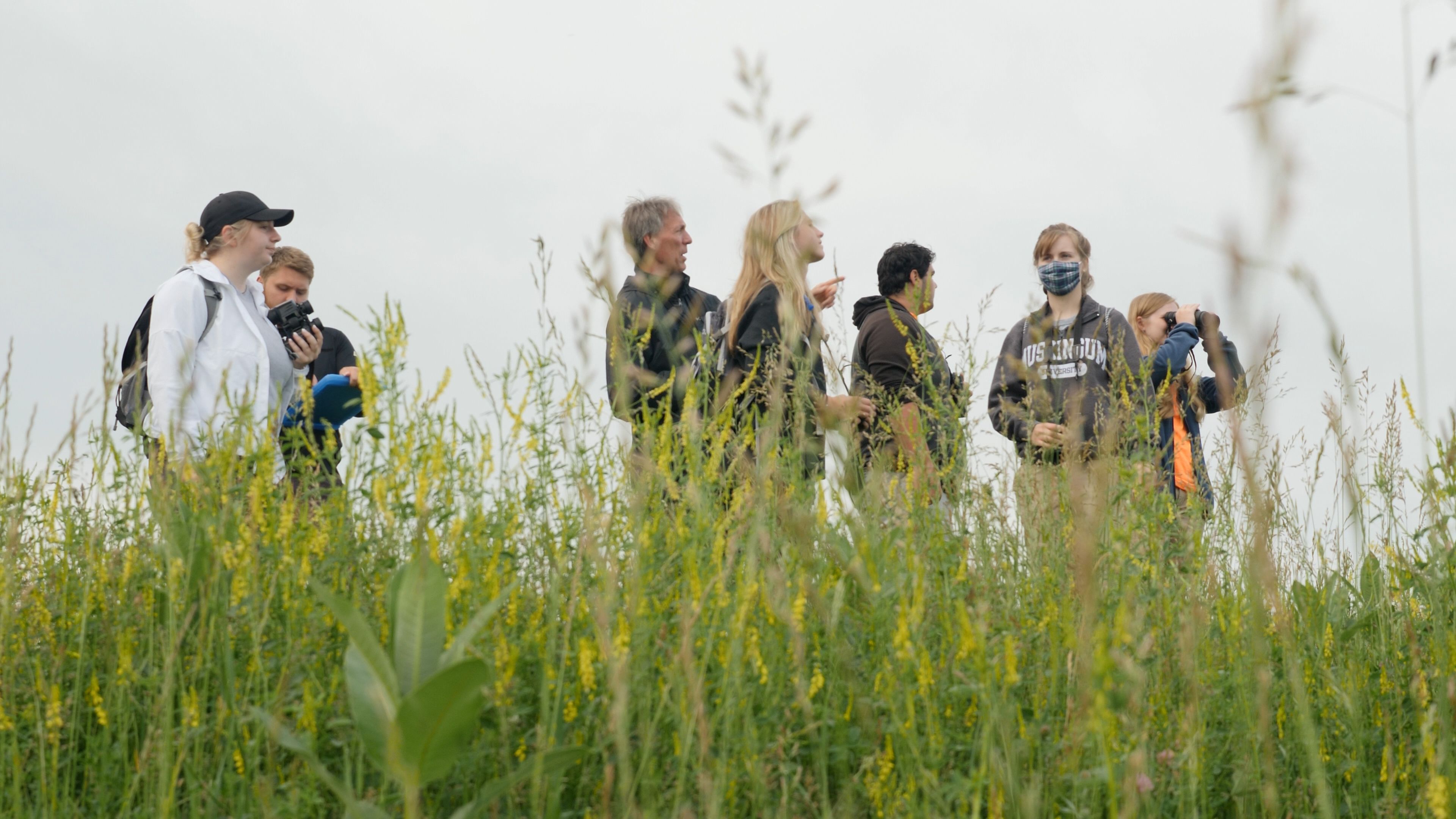
At our last stop, Genelle Uhrig, director of ecology, steps into a 40-year-old forest, but it feels brand new. Robert has finished his work removing autumn olive here. (It will sprout back, and it will need to be treated with an herbicide when it does.) Thin beams of sun slip through the canopy of oaks and sycamores, and light Genelle’s red curly hair. She stands in robust knee-high brush. There is such enormous space between the understory and the overstory the air feels like a cathedral–much cooler than the oppressive heat just past the last row of oak bowers.
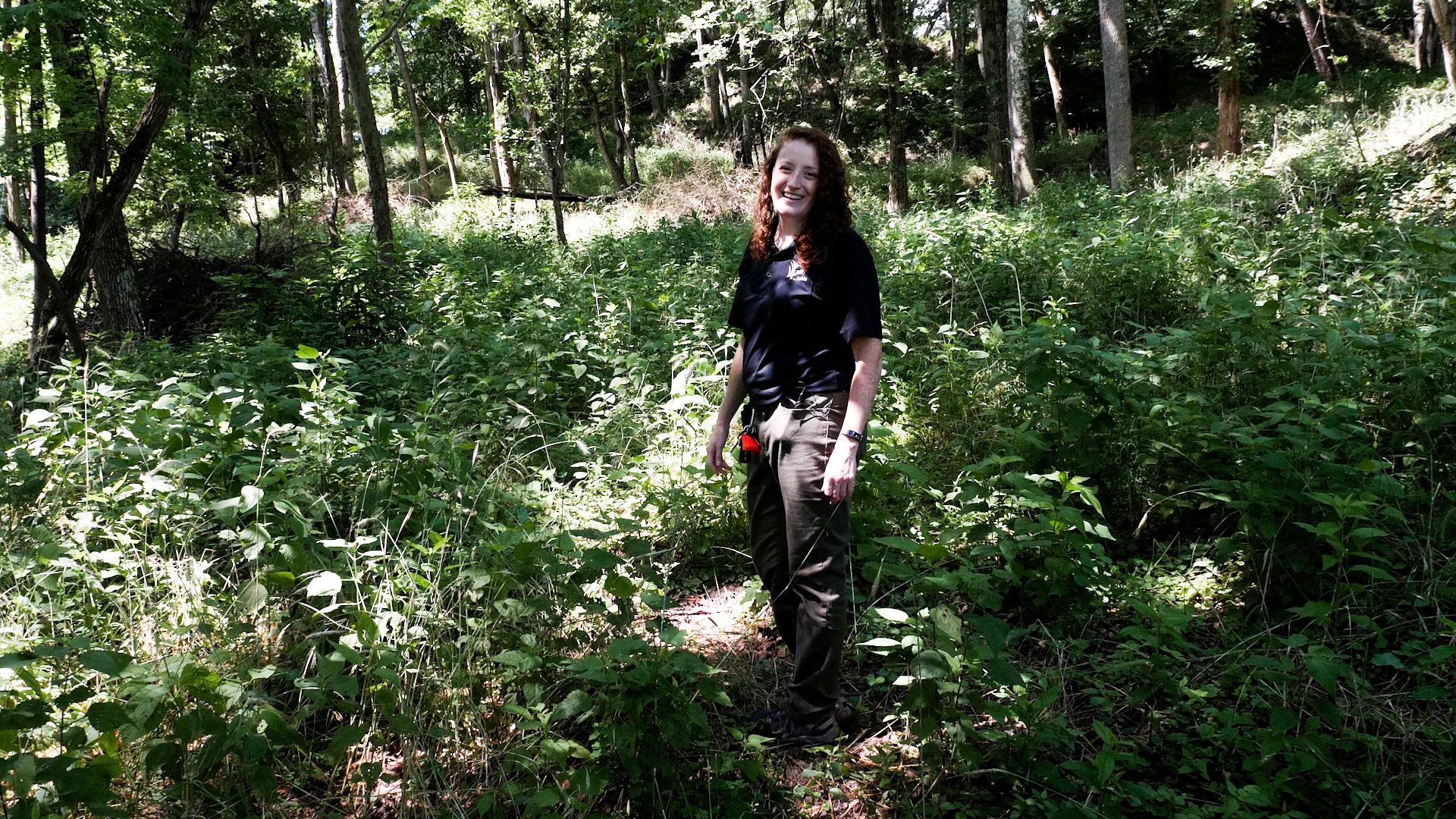
Genelle Uhrig in the forest cleared of autumn olive. (Photo by Doug Swift)
Genelle Uhrig in the forest cleared of autumn olive. (Photo by Doug Swift)
In this moment, I’m not thinking about the other thousands of acres teeming with autumn olive.
I’m thinking that this one space feels both new, and ancient. That it’s possible something sacred happened here once, a long time ago.
Back to The Reporting Project.
